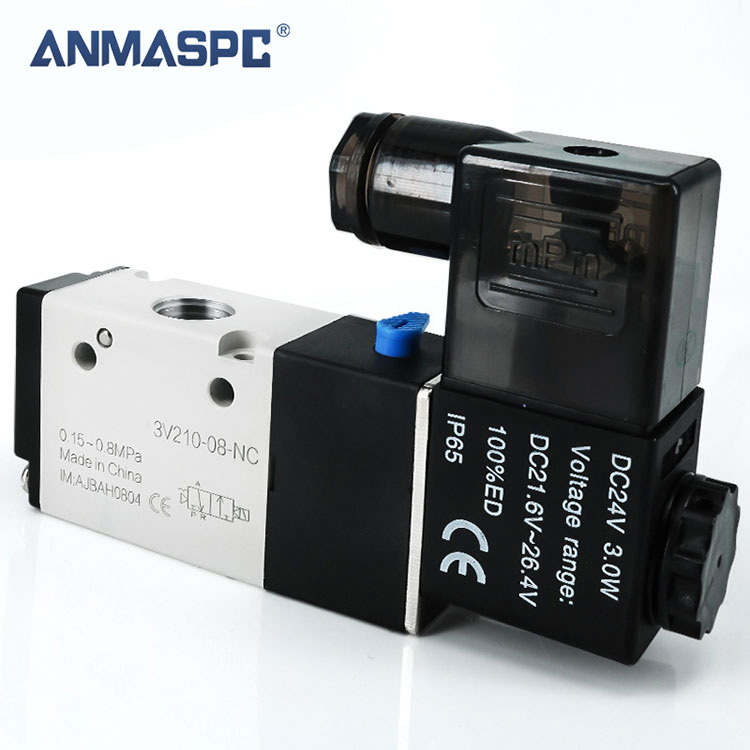Key Pneumatic Control Components
2024-06-05
Pneumatic control components are essential elements in systems that use compressed air to power and control various mechanical operations. These components work together to manipulate air pressure and flow to achieve desired movements and functions in industrial automation, manufacturing, and other applications. Here's an overview of the key pneumatic control components:
Key Pneumatic Control Components
1. Air Compressor
- Function: Generates compressed air from atmospheric air.
- Types: Reciprocating, rotary screw, and centrifugal compressors.
2. Air Preparation Units
- Filter: Removes contaminants from the compressed air.
- Regulator: Controls and maintains a consistent air pressure.
- Lubricator: Adds a fine mist of oil to the air stream to lubricate internal components of pneumatic tools and equipment.
3. Valves
- Directional Control Valves: Direct the flow of compressed air through the system.
- Types: 2-way, 3-way, 4-way, and 5-way valves.
- Flow Control Valves: Adjust the speed of actuators by regulating the air flow rate.
- Pressure Relief Valves: Prevent over-pressurization by venting excess air.
- Check Valves: Allow air flow in one direction only.
4. Actuators
- Cylinders: Convert compressed air into linear motion.
- Types: Single-acting, double-acting, rodless, and telescopic cylinders.
- Air Motors: Convert compressed air into rotary motion.
- Grippers: Used for picking and placing objects.
5. Pneumatic Tubing and Fittings
- Tubing: Conveys compressed air between components.
- Materials: Polyurethane, polyethylene, nylon, and PVC.
- Fittings: Connect and route the tubing.
- Types: Push-to-connect, compression, and barbed fittings.
6. Sensors and Switches
- Pressure Sensors: Monitor and control air pressure within the system.
- Proximity Sensors: Detect the position of components for feedback and control.
- Flow Sensors: Measure and monitor the flow rate of air.
- Limit Switches: Detect the presence or absence of an object or the position of a mechanical component.
7. Controllers
- Programmable Logic Controllers (PLCs): Automate the control of pneumatic systems with programmable logic.
- Pneumatic Logic Controllers: Use pneumatic signals for logic control, often used in simple automation tasks.
8. Air Tanks (Receivers)
- Function: Store compressed air to balance supply and demand, reduce compressor cycling, and maintain consistent pressure.
Applications of Pneumatic Control Components
- Industrial Automation: Automated machinery, robotic arms, and assembly lines.
- Manufacturing: Metalworking, plastic molding, packaging, and material handling.
- Transportation: Braking systems in trucks and buses, door control systems in public transport.
- Construction: Pneumatic tools like jackhammers, drills, and nail guns.
- Healthcare: Dental tools, pneumatic beds, and medical devices.
Advantages of Pneumatic Systems
- Simplicity and Reliability: Fewer moving parts compared to hydraulic systems, leading to lower maintenance requirements.
- Safety: Compressed air is non-flammable and poses less risk compared to electrical or hydraulic systems.
- Speed and Power: Capable of rapid and powerful movements, suitable for high-speed automation.
Considerations for Pneumatic Control Systems
- Air Quality: Proper filtration and lubrication are crucial to prevent component wear and ensure reliable operation.
- Pressure and Flow Management: Accurate control of air pressure and flow is essential for system performance and efficiency.
- System Design: Proper sizing of components and correct routing of air lines are critical to avoid pressure drops and ensure optimal performance.
Pneumatic control components are vital in many industrial and commercial applications, offering reliable, safe, and efficient solutions for motion control and automation.



